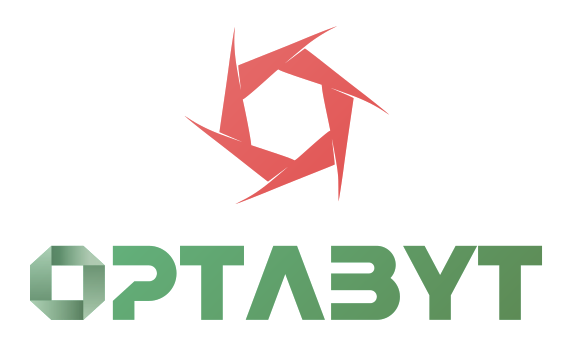
Table of Contents
ToggleAPI Security Web Development Norway: Building Secure and Scalable Digital Systems
Table of Contents
Introduction
In the digital age, APIs (Application Programming Interfaces) power almost everything—from mobile apps and websites to cloud platforms and IoT devices. But with this connectivity comes risk. Poorly secured APIs can expose sensitive data and open doors for cyberattacks. That’s why API security web development in Norway is more than just a technical need—it’s a strategic necessity.
Whether you’re a fintech startup in Oslo, an e-commerce platform in Bergen, or a SaaS provider in Trondheim, securing your APIs is critical to maintaining trust, legal compliance, and system integrity.
This article outlines the importance of secure API development, modern practices, Norwegian legal context, and how to build strong, secure APIs for today’s dynamic applications.
What is API Security Web Development?
API security web development involves designing and building web applications with secure and protected APIs. This includes strategies and tools that prevent unauthorized access, data breaches, and misuse while maintaining performance and scalability.
Core API Security Components:
Authentication and authorization
Secure data transmission (HTTPS, TLS)
Input validation and sanitization
Rate limiting and throttling
Logging and monitoring
Token and key management
Compliance with security standards (e.g., OWASP, GDPR)
Why It Matters in Norway
1. Rise in API-Centric Applications
Modern Norwegian digital services—from e-banking to public services—are API-heavy. Security must match this level of complexity.
2. GDPR and National Compliance
APIs must safeguard personal data and user privacy under Norway’s implementation of GDPR.
3. High Cost of Data Breaches
Data breaches are expensive—both financially and reputationally. Securing your APIs reduces the risk of attack vectors like token leaks and injection attacks.
4. Trust and Brand Reputation
Customers and clients in Norway expect secure online experiences. API security helps build and maintain trust.
Common Threats to Web APIs
Broken Object-Level Authorization
Insecure Data Exposure
Lack of Rate Limiting
Injection Attacks (SQL, NoSQL, Command)
Improper Authentication
Insufficient Logging & Monitoring
Man-in-the-Middle (MitM) Attacks
Secure API Development Practices
1. Use HTTPS/TLS Encryption
Encrypt all API communications to prevent interception and tampering.
2. Implement OAuth2 and OpenID Connect
Secure authentication flows for web and mobile apps—commonly used in Norwegian digital ID systems.
3. Token-Based Authentication
Use JWT (JSON Web Tokens) or API keys with expiration and scope limitation.
4. Rate Limiting & Throttling
Prevent abuse by controlling the number of requests per user/IP.
5. Input Validation & Sanitization
Sanitize all input data to prevent injection attacks.
6. Secure API Gateway
Use tools like Kong or Amazon API Gateway to enforce security policies and rate limits.
7. Logging & Monitoring
Track usage patterns and identify suspicious activity early.
8. Role-Based Access Control (RBAC)
Ensure users only access resources and data relevant to their role.
Tools & Technologies We Use in Norway
| Tool/Tech | Purpose |
|---|---|
| Postman Security Testing | Simulate API calls with auth tokens |
| OWASP ZAP | API vulnerability scanning |
| Swagger & OpenAPI | Secure API documentation |
| Kong, Apigee, AWS API Gateway | API management and protection |
| Vault by HashiCorp | Secure secret and token storage |
| Keycloak | Open-source identity and access management |
Our API Security Development Services in Norway
API architecture and planning
Secure RESTful API development
OAuth2 and API key management
Secure integrations with third-party APIs
Token-based authentication systems
SSL/TLS encryption setup
GDPR-compliant data protection
Rate limiting and anti-DDoS protection
Security audits and penetration testing
Monitoring and logging implementation
Industry Use Cases
Fintech Platforms
Secure API endpoints for banking, wallet services, and payment integrations.
E-Commerce Sites
Protect user credentials, product data, and transactions via secure APIs.
Government & Public Services
Ensure citizen data protection in open API models used by public digital services.
SaaS Platforms
APIs for client integration, data exchange, and authentication must meet enterprise security standards.
Project Timeline & Pricing in Norway
| Project Type | Estimated Cost (NOK) | Timeline |
|---|---|---|
| Secure API Setup | 40,000 – 70,000 | 2 – 3 weeks |
| Full API Dev with OAuth2 & RBAC | 80,000 – 150,000 | 4 – 6 weeks |
| Security Audit & Remediation | 30,000 – 60,000 | 1 – 2 weeks |
| API Gateway Setup | 20,000 – 50,000 | 1 week |
Pricing depends on scale, complexity, and technology stack.
Frequently Asked Questions (FAQs)
Q1: Can I secure existing APIs without rebuilding them?
Yes, with proper audit, gateways, and updated security protocols.
Q2: What’s better—OAuth2 or API keys?
OAuth2 is more secure for complex systems. API keys work for simpler setups with minimal risk.
Q3: Are open APIs less secure?
Not necessarily. Public APIs can be secure if proper authentication and rate limits are in place.
Q4: How often should APIs be tested for vulnerabilities?
At least quarterly or after major code updates.
Q5: Do you offer integration with BankID or Vipps APIs?
Yes. We provide secure implementation of national authentication/payment systems.
Q6: Can API security improve SEO or UX?
Indirectly. A secure system builds trust, and Google favors secure HTTPS domains.
Q7: What is OWASP API Top 10?
A list of the most common API security risks identified by the Open Web Application Security Project.
Q8: Can you work with legacy systems?
Yes. We secure APIs for both modern and legacy platforms.
Q9: Is there such a thing as “too secure”?
Yes—overly complex systems can create usability issues. Balance is key.
Q10: Do you offer long-term API monitoring?
Yes. We provide real-time monitoring and monthly security health reports.
Conclusion
As businesses in Norway increasingly rely on APIs to deliver services, manage data, and connect systems, the importance of API security web development cannot be overstated. Securing your APIs ensures your data stays protected, your operations run smoothly, and your customers remain confident in your digital solutions.
Whether you’re building a new platform or securing an existing one, our team specializes in delivering scalable, secure, and compliant API systems tailored for the Norwegian market.
Ready to fortify your digital infrastructure? Let’s secure your APIs—efficiently and effectively.
